How the Nikon V1 is changing my approach to Photography
by Francois Kaplan
Hey guys!
First let me congratulate you for the blog, it is always interesting and refreshing to read!
When I was 13 years old, I got my first serious camera, the Nikkormat EL with a 50mm prime. I enjoyed taking photos for years, mostly during my vacations. For some reason, studies, work, other activities probably, I gradually used it less and less and at one point, like many, I moved to digital cameras, this was the future! I bought a Canon ixus which had great reviews, but it broke, the cost of repair was prohibitive, almost like buying a new one. Anyhow a new one was just announced (of course) so I bought it. Unfortunately it fell also and broke a few months later. Even though I was the one who dropped it, I was upset with this concept of using fragile cameras and being driven to have to buy a new model each time something happened. I got a bit emotional with the whole thing and decided I will stop using digital cameras altogether and came back to my good’old Nikkormat.
This was my first shock! The process of taking photos was maybe a bit more complex than with the digital camera (but at the same time very refreshing and delightful) and when I got the prints back…. wow! They had a completely different quality to them, they had… soul (can I say this?). So here I was, happy again with my Nikkormat, rediscovering a treasure I had and also happy to beat the system.
But a few weeks later (of course) my good’old camera proved too old and broke twice (this time, not my fault, the shutter mechanism stopped working)… L and I was left on one hand with the realization of how much I liked photography and wanted to take photos and on the other hand completely unsatisfied with what I got from digital cameras.
I started to study a bit more, read many articles and in the end, decided to invest in more serious equipment. I did this progressively. I started with the D5000, then moved to the D7000, improved my lenses collection, bought in the middle the X100.
Each time, I went through an up and down process, starting to be enthusiastic with the progress I got from my previous equipment, but after a while feeling I was kinda cheating myself and had to admit I did not get the same “soul” experience than with the Nikkormat.
I definitely got soul with the Fuji (still not as the Nikkormat) which I love, but at the same time, I was also not fully satisfied with having to use the 35mm focal only. Don’t get me wrong, I do enjoy the discipline of having to use one focal only, this limitation drives creativity. I did several trips using only the X100 and enjoyed it a lot, especially when I was visiting cities such as New York or Paris, there the X100 shines.
But at the same time, I also missed the ability to use a wide or a good tele which I had with my Nikons.
After many hesitations, reading more reviews and encouraged by my wife, I made the jump to full frame and bought the D600. I found it was a serious step up from the D7000 (reviews say IQ is similar, but I experienced a real improvement). I still could not get the same “soul” of the Nikkormat or the X100, but it was really top-notch and produced a different type of photos, maybe colder, but definitely better than what I had previously.
It felt OK, toyish, the slow motion movies was nice to play with and the ability to use my 70-300 with the FT1 adaptor was also fun, but I did not relate to it as a serious camera and I almost did not use it. Cheap, but lost investment… or was it truly?
I was quite happy with my Fuji and D600. They lived side by side, I used one or the other, never together as they are not complementary, which was a bit of a shame really. BTW, I happened to use the Fuji more often than the D600 (remember the “soul” aspect, even though the D600 is full frame).
Then, I decided to spoil myself more and bought a top lens, a prime, the Nikon 58mm 1.4.
This was my second shock: the quality of the photos I got from this prime were at a totally different level than with the zooms I was using until now. They finally had the “soul” I was looking for! This was not a quantitative improvement, but a qualitative jump, the D600 was actually overcoming my memories of the Nikkormat (which is quite an achievement, as competing with memory is always unfair).
The recent V3 announcement reminded me that I had a V1 and one day I decided to play a bit with it and adapted the 58mm 1.4 to see what it would give. Third shock! or should I say, third and fourth shock.
Third shock: the photos were really good, sharp, very shallow DOF. See the first flower photo. This made me understand something I read but never really got, which is that glass is more important than camera body. The photos I got with my V1 with the 58mm 1.4 were better than the photos I got with the D600 and the kit 24-85 lens! I did not check at pixel level, but they looked and felt better.
Fourth shock: even though using the 58mm in the V1 was challenging, it also drove creativity. 58mm on CX is equivalent to 157mm on a FX, which is an odd focal for portrait, it is too long. But I found out this disadvantage could turn into a fun challenge, I had to frame differently, showing only part of the face, the hands, etc… It was more difficult to strike the right balance, but it gave character to the portraits. Plus, the DOF added even more character. See second example of the dog photo:
I was really not expecting this, the V1 producing photos at that level? Mmm… this was great news as it is so small + it is complementary with my D600! I could now use my prime twice, as a 58 and 157mm!
I looked at the V1 with new eyes and decided to complete this system. I bought the wide angle (6.7-13), which is a type of lens I was missing so much. It is maybe a bit expensive, but not so much actually if you consider wide angles + it is very very small and also very good.
With it I could combine in one small bag 18-35, 58 (close enough to 50) and tele ~160! A full system in a minimal and light space!
I recently went on a business trip in Ireland, and took with me the V1 only with the 6.7-13 and the 58mm. The kit was so small it easily fit in my computer bag. This was a great experience (apart from getting little sleep so I could be at the beach at 6:00 ready to take photos and enjoy the golden hours J), the battery life enabled me to take several hundred shots, the process of taking the photos was fun, I had the sharp wide lens available to photograph the beach from low angles, which I would never had with either my D600 or Fuji, and overall, the IQ was very good, with this famous “film like” quality grain reported in the reviews. See 2 examples of tree1 photo, beach photo and tree2 photo.
This was my second lesson: a good camera with you is better than a great camera that you left at home.
Added to the first lesson: a good camera with great lenses is better than a great camera with good lenses.
Gave me this conclusion: a small good camera with great lenses is always fun to use!
You can see the folder of my Dublin trip: http://500px.com/francoiskaplan/sets/dublin_april_2014
So here I am now, re-discovering simple truths that have been explained many times on the web, but that I never fully understood until now.
I will now focus more on lenses vs body, prioritize those with great quality, original focal and light weight so I can have them with me at any moment and use them.
The combination of the V1 and the D600 opens many opportunities and combinations here.
Thanks for reading!


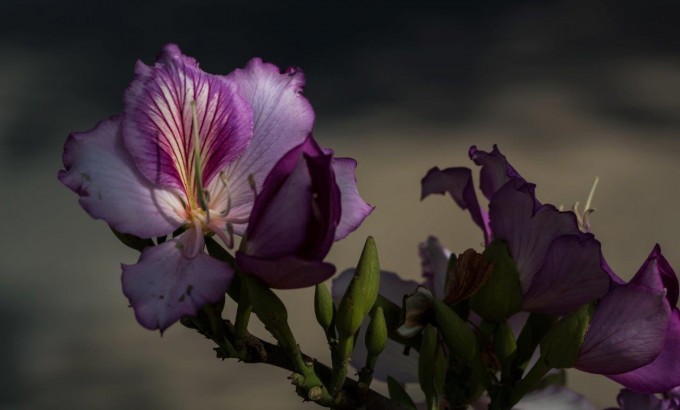
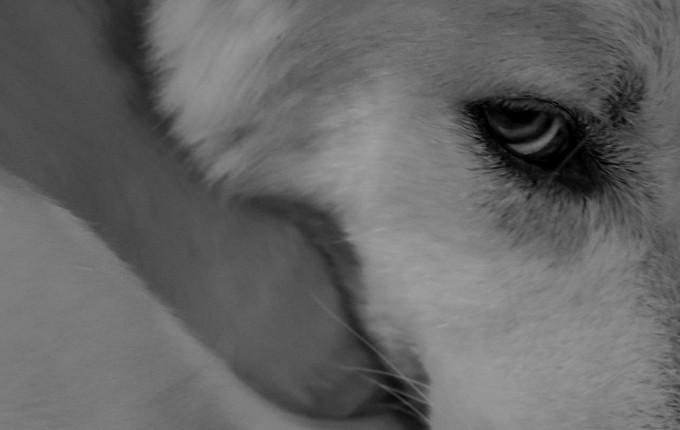
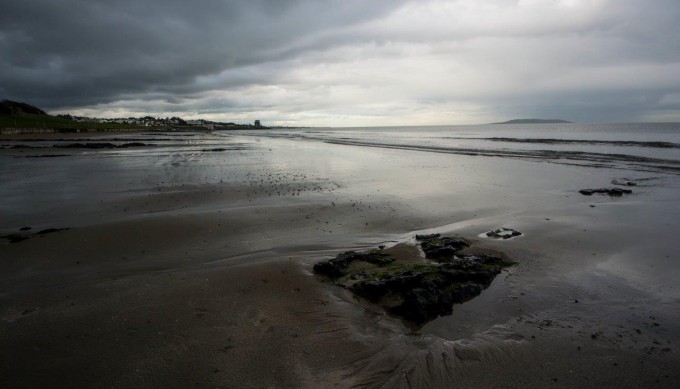
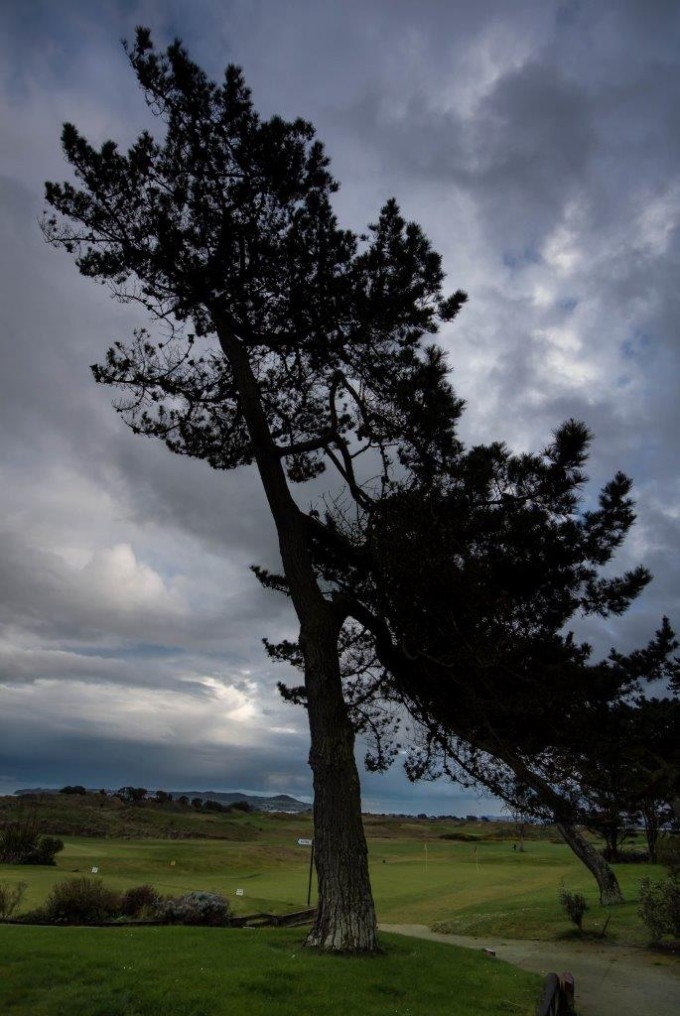
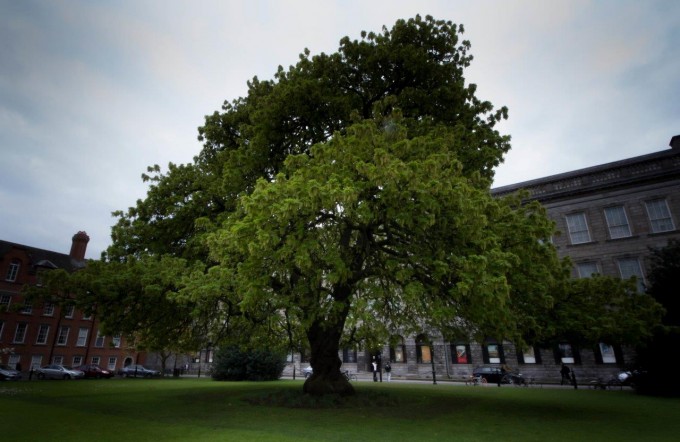


Since you originally bought the 58/1.4 for full frame, meaning a normal lens, you really ought to try the Nikon 1 18.5 f/1.8 normal prime on your V1. That 18.5 prime is such a joy on the V1, that I almost exclusively shot that combo for the last year. Occasionally I used the 6.7-13 for some landscapes. You should be able to find a very agreeable price on a refurbished 18.5 online…
Hi jdb, actually I do have the 18.5, yes it is a great lens. I have in my bag the 6.7-13, the 18.5 and the 10-100, and a small tripod. The whole package is extremely light, small, and gives me a unique range going from 18mm to 270mm. I recently discussed with a friend, he was in Bangkok market with his large DSLR and complained he was not able to take many shots as his large camera was intimidating. he agreed that having a small camera would have enabled him to take more photos, and more natural photos as well as people would not be posing. I really see many advantages with a 1″ censor (see also the new Sony)
Thanks
Interesting pictures although technically could be much more better. I personally think that the memory of your Nikkormat and the manual focused Nikkor 50mm lens will still be difficult to be overcome. The “soul” you are looking for does not only have to do either with the lenses or the bodies used. It takes a combination of both and above all it takes careful shooting and careful post processing. The general digital idea to get pictures straight out of the camera in JPEG without even setting your camera for the purpose is the biggest myth in the mainstream general photography talk all around the web. Little has really changed since your Nikkormat years. Film has been replaced by sensor but the process remains the same. You should work on your photos in order to get the “soul” you are looking for.
Regards,
Dimitris V. Georgopoulos
Photographer at Large
Athens, Greece.
Thanks Dimitri,
I did shot in RAW and used PP but a simple process. You are probably right that I should invest in learning PP more deeply
Kind regards,
Francois
Nice post. I use the J1, internally a very, very similar camera. Size was a big factor for me, VF not at all. I tend to opt for ISO1600 a great deal, really enjoying the character of the rendering of these shots. I process to B&W, and find there’s something redolent of Kodak Tri-X, always the most soulful of films.
Thanks!
I did not think of it but will try it. Do you have special recommendation when you shoot at 1600? Did you find different results per lenses or situation? You say you opt for ISO1600, what drives you to shoot at 1600 or less?
Kind regards
Francois
Yeah… I’m not really that clever about it, going more on feel. I guess with ISO it’s either: low as I can go, for reasonable exposure (I’m more likely to expose for highs, letting the shadows take care of themselves) to keep it clean, or bumping up 100 through 1600 for light. But then sometimes I just want it a bit grittier, so I use 1600. I guess You can process grain in, but it somehow seems more natural, more honest to shoot with it already there.
When I shot film there were cleaner films than tri-x, but I used tri-x. I guess I use the ISO in a similar way, as well as the way it’s intended to be used.
I barely use any other lens than the 10mm, so can’t comment on how a lenses affect the rendering, but it’s obviously much better with RAW. With JPEGs you get a softer file where NR kicks in. A well exposed file is important, as if you’re getting too far under the noise’ll dominate.
Got it, thanks!
I actually get what you’re saying with the photo of the flower petals, there is an ethereal elegance to it, caused by the rendering of the 58f/1.4. As more and more lenses are being adapted to the little N1 cameras, photos representing unexplored territory are being produced, with unique characteristics from the mingling of focal length and colour/bokeh/image rendition of the N1 cameras.
Absolutely!
Thanks Steven! I checked your photos, they are very strong, very graphical and dramatic, you have excellent compositions. What is good is that you have a style, with a distinct aesthetics.
I invite you to try a combination of FT1 with a good FX, maybe of the 50, I am sure you will be able to use the shallow DOF to create different type of dramatic shots.
Your photos remind me of certain comics (I hope you don’t mind) and shallow DOF can create movement even for non moving objects. They take a subject out of its context, zoom in and create immediate tension. I am sure you can enjoy it and with your eye and aesthetics create great photos!
You can’t go wrong investing in good glass. If you can find it used, even better.
🙂
Very interesting review Francois and it is great to see new and interesting lenses used on the V1.
The V1 has become my main “art camera.”
It has a look and feel that the high resolution digital cameras simply don’t seem to have.
Also the 6.7-13mm lens on the CX sensor can do things that full frame only dreams of.
Great shots and thanks for sharing.
I invite you check out my own V1 work here, all done with the 6.7-13mm lens:
https://www.flickr.com/photos/54171644@N07/
Thanks Steven! I checked your photos, they are very strong, very graphical and dramatic, you have excellent compositions. What is good is that you have a style, with a distinct aesthetics.
I invite you to try a combination of FT1 with a good FX, maybe of the 50, I am sure you will be able to use the shallow DOF to create different type of dramatic shots.
Your photos remind me of certain comics (I hope you don’t mind) and shallow DOF can create movement even for non moving objects. They take a subject out of its context, zoom in and create immediate tension. I am sure you can enjoy it and with your eye and aesthetics create great photos!
Francois,
Thank you for your compliments and for understanding my style.
My goal is to create a sense of emptiness, a kind of dark zen meditation if you will.
I use light and shadow in strong ways.
I also try to make sure my shots are free of humans in an obvious way.
I try to create images that have a timeless character, a sense that they could have been taken in the past or the future.
I want the viewer’s imagination to be free to create their own associations.
In all my images it is my style to have all elements in perfect super sharp focus with infinite depth of field, this is important for them to have power.
The V1 allows this.
Hi Steven,
You would really enjoy the combination of V1 + FT1 + prime 50, this will give you a very light combo for macro tele As you shoot objects, you will have less issues with wind and focus, you will be able to play with light and shadows. For example, if you shoot flowers with the sun in front of you (not the classic way), you will have the background in shiny white while the flowers will be highlighted, increase black and suddenly you see the structure of the flower. I am sure with your creativity you can find more ways to explore this.
You will be able to isolate details, such as wood structure, cracks in concrete, etc… and put them on stage.
You like wide angle, and I found that strong tele is a good complement to it, more than standard 35 or 50 as it enables a different perspective
Kind regards,
Francois
Very interesting idea.
A 50mm would have the field of view of a 135mm lens.
If I use a Nikon AF lens with the FT would I still have the auto features of focus available?
You would need to check how the lens is supported, i think it is supported, there is a list in Nikon web site
There are 2 options: if the lens is supported, you have a rectangle at the middle of the viewfinder and you can autofocus on this rectangle. Now continuous focus is also supported. Unless you center your subject, you will need to focus and re-frame. Note that if you shoot wide open this is a bit tricky, you might change the focus plan a bit. You can also focus manually.
If the lens is not supported (typically old lenses or non Nikon lenses), you need to be in full manual mode (aperture, speed) and once you set the parameters, you can focus manually. A bit longer but very easy to do
If you saw the article from Steve about the nikon 1 with C-mount lens http://www.stevehuffphoto.com/2013/07/27/taking-the-nikon-1-to-dream-land-with-a-25-1-4-c-mount-29-lens/
this is how he focused.
I believe you can have a lot of fun with these options.
One more option I thought of is the 60mm macro.
As I have the 58mm, i have no real need for it, but I ordered the 105 macro. I tried it in the shop and the results were amazing
i recommend you to go to a store and try it there
Kind regards,
Francois
Nice shots Francois – and I completely understand what you mean when you talk about camera/lens combos with ‘soul’.
I’ve seen many shots that, while technically good and taken by a skilled photographer using pro-level equipment simply lack a little… something… that’s hard to describe (‘soul’ is the closest word I can think of too).
And then there are those certain camera/lens combos that just have ‘it’
I’m reluctant to write this comment because I’m a *firm* believer that it’s the photographer that makes the image (not the lens/camera) but perhaps certain tools inspire us to be better?
Thanks, I completely agree with you.
I also had some restrictions when i wrote my post, as I wanted to convey that approach to photo, inspiration, framing is more important to what equipment you use. And when I read it the first time it looked like the journey of an equipment junkie 🙂
It is the same with music, some people want to listen to each instrument when they listen to their hifi, and it is as if they listen to their system, not the music playing.
On the other hand, you do need equipment to express yourself and you do need to practice and learn how to use it, this is also true for real artists, such as musicians, painters, etc…
I also agree that sometimes, you relate to the cameras differently, the X100 from this point of view is exceptional, you hold it and you feel something. But at the end of the day, what matters is that you have something in mind, some original approach of the photos you want to take and have an equipment that enables you to do it. For me, once you get good enough sharpness, good colors, I found that weight, portability is important, as well as interesting focals.
Enjoy taking photos 🙂
Great article. I have tried so many cameras including the latest offerings from Fuji and Olympus. I just keep coming back to the Nikon 1 system. The lenses are sharp and image quality is great up to ISO 800 (i am picky). OOC colours are superb and I have done side by side comparisons with the Fuji XT1 and Olympus EM1 and I prefer the Nikon colours and look of the photos. I still have the original Fuji X100, which I LOVE and which complements the Nikon 1. In my opinion the X Trans sensor is missing something compared to the X100. I think the Nikon 1 system and Fuji X100 make a great pair. I am seriously considering getting the V3 and hope that the images retain their ‘look’.
Thanks Rizwan! Yes, I also limit ISO to 800 as well, sometimes only to 400.
For some of the beach landscapes, I used 100 ISO only with a tripod. This is BTW one of the advantages of the CX censor, which is that if you use the combination of 100 ISO and closed focal (and you use a tripod) (or not if you want to play with effects) you can have really long exposures with nice effects on water, lights, etc…
I also agree colors OOC are great, film-like. I showed some of the Ireland photos to a friend and he was really surprised, he said it looks like film and asked how much PP I did (not much).
I see what you mean about x100 and V1 complementing each other, you are right, but the advantage of V1 + FX (or DX as well), is that when you get a great lens, you can use it with different focals, this is exciting to me.
Re V3, I hope you will try it and send your feed-back 🙂 I am personally more interested in the new 70-300 zoom. I have the FX one, and am not fully happy with it on the V1, i don’t get the same colors or quality than with the 58. The new 70-300 seems interesting due to the nano coating, and fact that focus will be optimized on the 1 system which is key for long tele.
BTW, if you have the V1, you don’t need to go to the ~$1.6K 58, you can check how the ~$200 50 1.8 work on it, it should be stellar, small with a very use-able 135 focal.
Kind regards,
Francois
Very nice and refreshing article. Thanks for sharing!
Thanks Ro!
I like your enthusiasm Francois but to me the pics look rather unsharp. I tried the AFS 58, 1.4 on my D3s and wide open I was pretty disappointed´with regards to sharpness – not much better as my AF D 50, 1.4. The 32, 1.2 is convincing for N1´on the other hand. By the way am I the only one when it comes to display failure on the V1 front? I think the sensor of the viewfinder of the V1 is seriously flawed. I had one repair by Nikon Service last January and now the display stays blacked out all over again.
Wildphoto: at the back of the V1 viewfinder, there’s a little sensor that detects when you’re looking through the viewfinder, and it can be prone to dust. Try cleaning it. Just blowing on it often restores functioning.
Thanks! i did not have an issue with the V1 display, but I only have one so this is not really statistical material 🙂 but I never read anything about it on the web…
Regarding sharpness, I have few comments. I did not tested the AF D 50, so I cannot compare, but I used the 24-85 kit lens, the 70-300 zoom, and a 24 2.8. Compared to these lenses, the 58 1.4 is sharper. Here is a shot done on my D600, I think the helmet is sharp
http://500px.com/photo/65187749?from=user
The issue is that DOF is so shallow wide open that iyou can easily miss focus, either because you or subject moved a bit. Even a very small move will impact focus. If you completely miss focus, then the reason is obvious, but if you miss focus a little, it might look as not sharp.
This is particularly the case with the V1, as you can only focus at the center. typically, I don’t like to have the subject at the center, so I tend to focus and reframe, this can mess up with focus as the reframe impacts the plan of focus, also, the process takes a bit of time, maybe ~1s and during that second, the subject (or you) might move. I took photos of the birthday cake of my son that my wife prepared, this was indoor, I did not use a tripod but could use the table to hold my elbows so I was pretty stable and the shots were very sharp. But in most case, I found that getting to sharp focus with the 58 1.4 wide open on the V1 is challenging. I can either use manual focus (works well) on close a bit the focal to 1.8, 2.2 or even 2.8. I then need to decide what is the optimal combination of getting the subject in focus vs. creating this shallow DOF focus effect.
I did not try the 32 1.2 but read it is excellent
Thanks for your feed-back, kind regards,
Francois
Thanks for the cleaning advice with regard to the eye sensor of the V1. I tried it several times but after a very short time it goes back to black. I send the cam to the local Nikon service for the second time todasy because of this. Otherwise I really like this cam if you get used to the dial that always turns the other way you like on the back and you cannot lock in 1600 ISO for auto ISO.
The AF D 50 is wide open not as “good” as the AFS 58 of course but the latter costs more than six times the money you’d pay for the older design. Because of the fixed focus with the FT1 you will always have a problem with focusing a fast prime. That’s why the 18,5, 18 and the 32, 1.2 have a real advantage esp. for out of the middle compositions.
Nevertheless it’s good fun to try and test different combos. I tried the V1 with FT1 and the older AF I 400, 2.8 but it would not focus only manually is possible without an “AFS” lens.
Cheers Michael
This is a common problem that is easily fixed (most of the time). When this happened to me I cleaned the eye sensor with a Q-tip and it worked like normal again.
Hi, what I meant is that at 1.4, the plan of focus is very small, so if you move a little or if the subject moves a little, the part that you want to focus on becomes out of focus.
Thanks